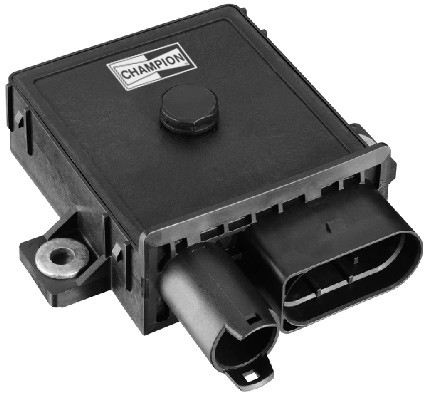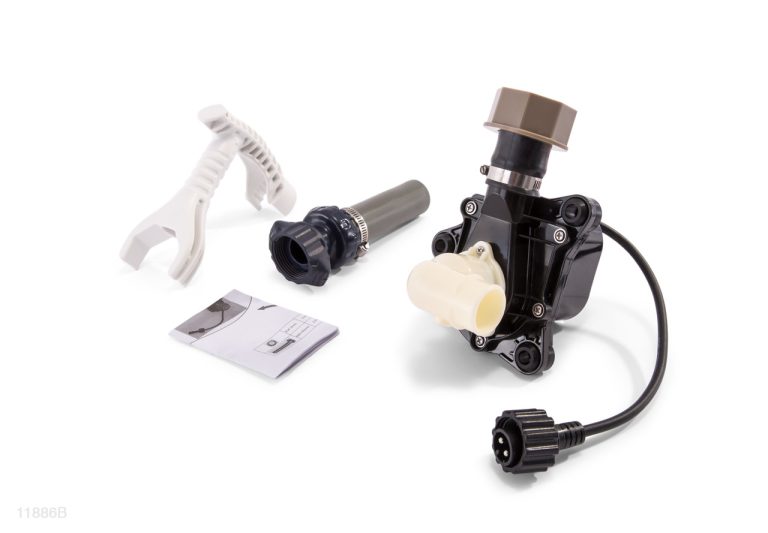Symptoms of a Bad Glow Plug Control Module
When it comes to diesel engines, glow plugs play a crucial role in the starting process. A bad glow plug control module can lead to various issues, affecting the overall performance of the vehicle. In this article, we’ll discuss the symptoms of a bad glow plug control module, the importance of timely diagnosis, and the potential consequences of neglecting this essential component.
Understanding the Glow Plug Control Module
Before delving into the symptoms, let’s understand the function of the glow plug control module. The module is responsible for regulating the glow plug system, which aids in heating the combustion chamber during cold starts. By preheating the air in the combustion chamber, the glow plugs ensure the diesel fuel ignites smoothly, allowing the engine to start efficiently.
Common Causes of Glow Plug Control Module Failure
Before diving into the symptoms, it’s helpful to understand why a glow plug control module might fail. Here are some of the most common causes:
- Wear and Tear: Over time, constant exposure to heat and electrical cycles can degrade the module’s performance.
- Electrical Issues: Faulty wiring, loose connections, or short circuits can cause the control module to fail.
- Moisture Damage: Moisture can infiltrate the control module, especially in humid or wet environments, leading to corrosion.
- Poor Battery Health: A weak or faulty battery can strain the control module and prevent it from properly controlling the glow plugs.
Symptoms of a Bad Glow Plug Control Module
Identifying the signs of a failing glow plug control module is imperative for maintaining the health of your diesel engine. Here are some common symptoms to watch out for:
1. Difficulties In Starting The Engine
A prominent symptom of a bad glow plug control module is experiencing difficulties when starting the engine, especially in cold weather. If the module fails to activate the glow plugs properly, the engine may struggle to start, leading to prolonged cranking times.
2. Check Engine Light
If the control module is malfunctioning, it can trigger the check engine light on the dashboard. This serves as an indicator that there are issues with the glow plug system, prompting the need for a diagnostic scan to pinpoint the exact cause of the problem.
3. Decreased Fuel Efficiency
A failing glow plug control module can result in decreased fuel efficiency. Since the combustion process may not be optimized due to poorly heated air in the cylinders, the engine may consume more fuel to compensate for the lack of efficient combustion.
4. Rough Idle And Misfires
When the glow plug control module isn’t functioning as intended, the engine may experience rough idle and misfires. These symptoms indicate that the combustion process is not optimal, leading to a lack of smooth operation and potential damage to the engine over time.
5. Exhaust Smoke And Odor
In severe cases, a malfunctioning glow plug control module can lead to excessive exhaust smoke and a strong odor of unburned fuel. This occurs due to incomplete combustion, potentially causing environmental pollution and indicating a serious issue that requires immediate attention.
Diagnosing a Faulty Glow Plug Control Module
Diagnosing a faulty glow plug control module requires a combination of visual inspection, error code reading, and component testing. A professional diagnostic tool can be used to read trouble codes from the vehicle’s onboard diagnostic system (OBD), providing insight into whether the module, glow plugs, or related wiring is at fault. Checking the wiring and connections is also essential to rule out other potential causes.
The Importance of Timely Diagnosis and Repair
Given the crucial role of the glow plug control module in starting a diesel engine, it’s essential to address any signs of malfunction promptly. Ignoring the symptoms and neglecting the necessary repairs can have detrimental effects on the vehicle and lead to costly repairs down the line.
Timely diagnosis and repair not only prevent further damage to the engine but also ensure that the vehicle operates efficiently, especially during cold weather conditions when the glow plugs are relied upon to start the engine reliably.

Credit: www.championautoparts.com
How to Test the Glow Plug Control Module
Testing the glow plug control module typically involves using a multimeter to check for continuity and resistance in the circuit:
- Locate the Control Module: Consult your vehicle’s manual to find the exact location of the glow plug control module, often near the engine or the firewall.
- Check for Voltage: Using a multimeter, check the voltage going into the control module. If there is no voltage, it may indicate a wiring or battery issue.
- Test Each Glow Plug Circuit: Measure the resistance of each glow plug circuit by setting the multimeter to the appropriate setting and comparing the readings with the specifications in the manual. High or inconsistent readings indicate a potential problem with the module.
If the readings are outside the manufacturer’s specifications, it’s likely time to replace the module.
Replacing a Faulty Glow Plug Control Module
Replacing a glow plug control module is usually a straightforward task but may require some familiarity with vehicle electronics. Here’s a general guide:
- Disconnect the Battery: Start by disconnecting the vehicle’s battery to avoid electrical shocks.
- Locate and Remove the Module: Unmount the glow plug control module from its location.
- Install the New Module: Connect the new module, ensuring all wiring connections are secure.
- Reconnect the Battery: After installing, reconnect the battery and start the vehicle to check if the symptoms persist.
Consult your vehicle’s manual for any specific instructions and consider seeking professional assistance if you’re unfamiliar with automotive repairs.
Consulting a Professional Mechanic
When encountering any of the aforementioned symptoms, it’s advisable to consult a professional mechanic with expertise in diesel engines. A qualified technician can conduct diagnostic tests to identify the root cause of the issue and recommend the appropriate repairs or replacements for the glow plug control module.
Additionally, seeking the expertise of a professional ensures that the repair process is carried out accurately, preventing any further complications or risks associated with a malfunctioning glow plug control module.
Preventing Glow Plug Control Module Failure
Preventing glow plug control module failure involves regular maintenance and inspection. Here are some preventive tips:
- Regularly Check Battery Health: A strong battery ensures that the control module has a stable power source.
- Inspect Electrical Connections: Periodically inspect the wiring and connections around the glow plug control module to ensure they are secure and corrosion-free.
- Monitor Engine Performance: Paying attention to early symptoms, such as rough idling or starting issues, can help catch problems before they escalate.
- Service as Recommended: Follow your vehicle manufacturer’s service recommendations to keep your engine and its components in good condition.
Frequently Asked Questions For Symptoms Of A Bad Glow Plug Control Module
What Are The Common Symptoms Of A Bad Glow Plug Control Module?
A bad glow plug control module may cause hard starting, rough idling, and decreased engine performance.
How Can I Diagnose A Malfunctioning Glow Plug Control Module?
You can diagnose it using a scan tool to check for trouble codes and perform a resistance test on the module.
Why Is It Important To Address Issues With The Glow Plug Control Module Promptly?
Ignoring the issue may lead to poor engine performance, decreased fuel efficiency, and potential damage to the engine.
Can A Malfunctioning Glow Plug Control Module Cause Starting Problems In Cold Weather?
Yes, a faulty module can lead to difficulty starting the engine, especially in cold weather conditions.
Conclusion
A bad glow plug control module can lead to a range of symptoms, affecting the overall performance of a diesel engine. Understanding these symptoms and addressing them promptly through the expertise of a professional mechanic is essential for maintaining the health and efficiency of the vehicle. By taking proactive measures to diagnose and repair a faulty glow plug control module, vehicle owners can ensure a reliable and optimized operation of their diesel engines, particularly during cold weather conditions.






My car not starting I change glow control unit
If your car is not starting even after changing the glow control unit, you might want to check the following:
Battery Condition: Ensure the battery is charged and connections are tight.
Fuses: Check for any blown fuses related to the glow plug system.
Glow Plugs: Inspect the glow plugs themselves; they may need replacement.
Fuel Supply: Make sure there’s fuel in the tank and the fuel system is functioning properly.
Starter Motor: Check if the starter motor is working.
If the issue persists, it might be best to consult a mechanic.